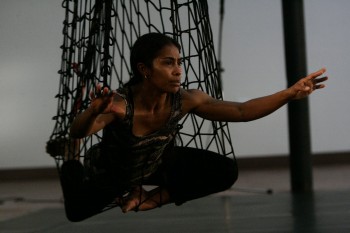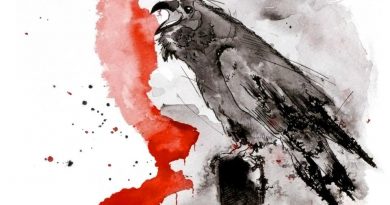In conversation with Rachael Swain: Dramaturg and Creative Producer of Gudirr Gudirr
Exploring the notion of inter-cultural relationships includes a range of different conversations. Those between different cultural groups within Australia; Indigenous Australians and non-Indigenous Australians; and although not often seen in the limelight, Indigenous Australians of mixed descent with each other.

Exploring the notion of inter-cultural relationships includes a range of different conversations. Those between different cultural groups within Australia; Indigenous Australians and non-Indigenous Australians; and although not often seen in the limelight, Indigenous Australians of mixed descent with each other.
The latter is especially relevant to our world in the 21st century, a world in which Australia has had to come to terms with the divisiveness of its past binaries of black vs. white and the carnage that has taken place in the face of apathy and insularity. However, the need to examine the deeply complex relationships that constitute the fabric of our society is slowly being brought to the fore and it is companies such as Marrugeku’s latest dance work Gudirr Gudirr which does precisely that.
In a recent conversation with Rachael Swain, dramaturg and creative producer of Gudirr Gudirr, we discussed the importance of such a work in developing those much needed conversations for artists and audiences.
“Gudirr Gudirr is a solo work that specifically looks at a moment in time in Aboriginal history,” explains Swain, “The legacy of the past for the inhabitants of Broome and particularly for those with Asian-Indigenous cultural heritage such as Dalisa, this is her story.”
With a strong background in a variety of different movement practices including gymnastics, animal traditions as well as traditional dances and forms from Broome, Dalisa Pigram is a highly sophisticated dancer whose personal story of examining multi-ethnic Indigenous expression reflects one of the many critical issues that the company seeks to interrogate.
The title itself Gudirr, Gudirr is a Yawuru word for a bird that calls a warning that the tide is turning.
“In the story shared by Patrick Dodson (Yawaru law man) the bird is very important because it is telling all the other creatures to be wary, things are changing. Right now, things in Broome are changing and it is important that we examine the relationship between cause and effect, both in the art we make but also how that is played out in this area.”
A devised production that draws upon much of the groundwork of Marrugeku’s past performance, Burning Daylight (including the choreographic process and the physical and conceptual ideas) this particular work has been waiting for the right moment to make its debut.
“Koen Augustidjen (director) and myself have worked together previously as co-directors and 12 years ago he built a solo piece for Dahlia in a different show,” says Swain, “He has been waiting a long time to see her develop a full-length work and together they have co-choreographed Gudirr Gudirr which is very exciting to see.”
The work itself tackles themes of developing conversations between people, acknowledging the high rates of youth suicide in the Kimberley and exploring how different key elements of the visceral body are consider within the larger environmental framework in which they are grown.
Currently, still in Broome and rehearsing the show with the rest of the creative team, Swain is looking forward to bringing the work to Melbourne.
“This is a piece that reflects the distinctive cultural expression that is very much part of Broome, and Dalisa is exploring not only her own personal story in this piece but also how it really is a time for the Indigenous people of the area to realize that the bird is calling, there is a warning in the air and unless we take notice, there could be some very serious consequences,” says Swain.
“This is an account of the past but it simultaneously acknowledges the present and looks towards the future.”
Dalisa Pigram’s work promises to be an important addition to the dance massive program and is only one of two productions that have an element of Indigenous inter-cultural dialogue.
Gudirr Gudirr
Venue: Arts House, Meat Market
Dates: Tuesday 12 – Saturday 16 March
60 minutes no interval

